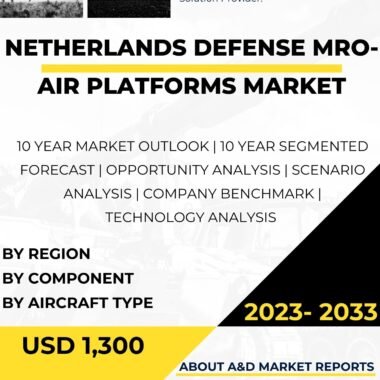Description
Japan has firmly established itself as a significant contributor to the global market for manned to unmanned assisted combat systems, showcasing its commitment to cutting-edge technology, defense modernization, and the development of advanced combat capabilities. Manned to unmanned assisted combat systems, often referred to as MUM-T (Manned-Unmanned Teaming), involve the integration of manned platforms (e.g., fighter jets, helicopters) with unmanned systems (e.g., drones, UAVs) to enhance military operations, situational awareness, and mission effectiveness.
One of the driving forces behind Japan’s presence in the global MUM-T market is its strategic focus on enhancing its military capabilities in response to evolving regional security challenges. Japan’s geographic location in the Asia-Pacific region places it in proximity to various geopolitical hotspots and security concerns. To effectively address these challenges, Japan has invested significantly in research and development to create innovative MUM-T solutions, allowing its military to conduct a wide range of missions with increased efficiency and effectiveness.
Japan’s commitment to technological innovation plays a pivotal role in its contribution to the MUM-T market. The nation has made substantial investments in the development of advanced unmanned systems, communication technologies, and artificial intelligence (AI) algorithms that facilitate seamless coordination between manned and unmanned assets. These integrated systems provide enhanced situational awareness, target identification, and mission execution capabilities for its military forces.
Furthermore, Japan actively engages in international defense collaborations and partnerships, contributing to its MUM-T capabilities. Collaborative ventures with global defense companies facilitate technology transfer, knowledge sharing, and interoperability with key allies, strengthening the nation’s military capabilities. These collaborations enable Japan to integrate cutting-edge MUM-T technology into its military platforms and operations.
Japan’s expertise in MUM-T technology extends beyond military applications. The nation recognizes the dual-use potential of these systems and their applications in civilian sectors such as disaster response, search and rescue, and infrastructure monitoring. This dual-use approach not only enhances Japan’s technological proficiency but also fosters innovation in both defense and civilian industries.
In conclusion, Japan’s significant role in the global manned to unmanned assisted combat systems market underscores its commitment to defense modernization, technological excellence, and the development of advanced combat capabilities. As the security landscape continues to evolve, Japan’s expertise in MUM-T technology will play a pivotal role in enhancing its military readiness, conducting effective operations, and contributing to regional and global security and stability. This commitment reflects Japan’s dedication to safeguarding its national interests and its role as a responsible global security partner.




